Mechanical, Water Absorption, and Tribological Behavior of Polymer Composites: Role of Pineapple Leaf Fiber Orientation
Abstract
1. Introduction
2. Materials and Methods
2.1. Materials
2.2. Fabrication of Composites
2.3. Assessment of the Mechanical Properties of the Fabricated Composites
2.4. Water Absorption Test
2.5. Tribological Performance Assessment
3. Results and Discussion
3.1. Effect of Different Orientations of Fibers on Tensile Strength
3.2. Effect of Different Orientations of Fibers on Flexural Strength
3.3. Effect of Different Orientations of Fibers on Impact Strength
3.4. Effect of Different Orientations of Fibers on Micro-Hardness
3.5. Effect of Orientations of Fibers on Water Absorption
3.6. Effect of Orientations of Fibers on Tribological Behavior
4. Conclusions
Author Contributions
Funding
Data Availability Statement
Conflicts of Interest
References
- Anand, P.B.; Lakshmikanthan, A.; Gowdru Chandrashekarappa, M.P.; Selvan, C.P.; Pimenov, D.Y.; Giasin, K. Experimental Investigation of Effect of Fiber Length on Mechanical, Wear, and Morphological Behavior of Silane-Treated Pineapple Leaf Fiber Reinforced Polymer Composites. Fibers 2022, 10, 56. [Google Scholar] [CrossRef]
- Ghasemzadeh, B.; Duchesne, M.C.; Rodrigue, D. Mechanical, water absorption and aging properties of polypropylene/flax/glass fiber hybrid composites. J. Compos. Mater. 2015, 49, 3781–3798. [Google Scholar] [CrossRef]
- Vijay, C.; Bajpai, P.K.; Maheshwari, S. Studies on mechanical and morphological characterization of developed jute/hemp/flax reinforced hybrid composites for structural applications. J. Nat. Fibers. 2018, 15, 80–97. [Google Scholar] [CrossRef]
- Karimah, A.; Ridho, M.R.; Munawar, S.S.; Adi, D.S.; Damayanti, R.; Subiyanto, B.; Fatriasari, W.; Fudholi, A. A review on natural fibers for development of eco-friendly bio-composite: Characteristics, and utilizations. J. Mater. Res. Technol. 2021, 13, 2442–2458. [Google Scholar] [CrossRef]
- Elfaleh, I.; Abbassi, F.; Habibi, M.; Ahmad, F.; Guedri, M.; Nasri, M.; Garnier, C. A comprehensive review of natural fibers and their composites: An eco-friendly alternative to conventional materials. Results Eng. 2023, 19, 101271. [Google Scholar] [CrossRef]
- Reddy, M.I.; Kumar, M.A.; Raju, R.B. Tensile and Flexural properties of Jute, Pineapple leaf and Glass fiber Reinforced Polymer Matrix Hybrid Composites. Mater. Today Proc. 2018, 5, 458–462. [Google Scholar] [CrossRef]
- Kumar, N.; Singh, A.; Debnath, K. Influence of fiber weight ratio on the mechanical and water absorption performance of borassus/epoxy composites. Mater. Test. 2020, 9, 937–942. [Google Scholar] [CrossRef]
- Sethupathi, M.; Khumalo, M.V.; Skosana, S.J.; Muniyasamy, S. Recent Developments of Pineapple Leaf Fiber (PALF) Utilization in the Polymer Composites—A Review. Separations 2024, 11, 245. [Google Scholar] [CrossRef]
- Asim, M.; Abdan Khalina Jawaid, M.; Nasir, M.; Dashtizadeh Zahra Ishak, M.R.; Hoque, M.E. A Review on Pineapple Leaves Fibre and Its Composites. Int. J. Polym. Sci. 2015, 2015, 950567. [Google Scholar] [CrossRef]
- Khumalo, M.V.; Sethupathi, M.; Skosana, S.J.; Muniyasamy, S. Melt-Extruded High-Density Polyethylene/Pineapple Leaf Waste Fiber Composites for Plastic Product Applications. Separations 2024, 11, 256. [Google Scholar] [CrossRef]
- Sezgin, H.; Enis, I.Y.; Berkalp, O.B. Impact of biaxial square woven jute fabric reinforcement on mechanical performance of polyester-based composites. Indian J. Fibre Text. Res. 2018, 43, 252–256. [Google Scholar]
- Jain, J.; Sinha, S. Pineapple leaf fiber polymer composites as a promising tool for sustainable, eco-friendly composite material. J. Nat. Fibers 2022, 19, 10031–10052. [Google Scholar] [CrossRef]
- Motaleb, K.A.; Shariful Islam, M.; Hoque, M.B. Improvement of physicomechanical properties of pineapple leaf fiber reinforced composite. Int. J. Biomater. 2018, 1, 7384360. [Google Scholar] [CrossRef]
- Kumar, N.; Singh, A. Study the effect of fiber orientation on mechanical properties of bidirectional basalt fiber reinforced epoxy composites. Mater. Today Proc. 2021, 39, 1581–1587. [Google Scholar] [CrossRef]
- Lasikun, L.; Ariawan, D.; Surojo, E.; Triyono, J. Effect of fiber orientation on tensile and impact properties of Zalacca Midrib fiber-HDPE composites by compression molding. AIP Conf. Proc. 2018, 1931, 030060. [Google Scholar] [CrossRef]
- Bakir, B.; Hashem, H. Effect of fiber orientation for fiber glass reinforced composite material on Mechanical properties. Int. J. Min. Metall. Mech. Eng. 2013, 1, 2320–4060. [Google Scholar]
- Doddi, P.R.; Chanamala, R.; Dora, S.P. Effect of fiber orientation on dynamic mechanical properties of PALF hybridized with basalt reinforced epoxy composites. Mater. Res. Express 2020, 7, 015329. [Google Scholar] [CrossRef]
- Almeida, J., Jr.; Angrizani, C.C.; Botelho, E.C.; Amico, S.C. Effect of fiber orientation on the shear behaviour of glass fiber/epoxy composites. Mater. Des. 2015, 65, 789–795. [Google Scholar] [CrossRef]
- Cordin, M.; Bechtold, T.; Pham, T. Effect of fiber orientation on the mechanical properties of polypropylene–lyocell composites. Cellulose 2018, 25, 7197–7210. [Google Scholar] [CrossRef]
- ASTM D638-22; Standard Test Method for Tensile Properties of Plastics. ASTM International: West Conshohocken, PA, USA, 2022.
- ASTM D790-17; Standard Test Methods for Flexural Properties of Unreinforced and Reinforced Plastics and Electrical Insulating Materials. ASTM International: West Conshohocken, PA, USA, 2017.
- ASTM D6110-18; Standard Test Method for Determining the Charpy Impact Resistance of Notched Specimens of Plastics. ASTM International: West Conshohocken, PA, USA, 2018.
- ASTM E384-22; Standard Test Method for Microindentation Hardness of Materials. ASTM International: West Conshohocken, PA, USA, 2022.
- ASTM D570-22; Standard Test Method for Water Absorption of Plastics. ASTM International: West Conshohocken, PA, USA, 2022.
- ASTM G99-23; Standard Test Method for Wear and Friction Testing with a Pin-on-Disk or Ball-on-Disk Apparatus. ASTM International: West Conshohocken, PA, USA, 2023.
- Kumar, N.; Singh, A. Effect of aloe vera natural fiber orientation on the mechanical properties of epoxy composites. Adv. Mater. Technol. 2023, 9, 1859–1873. [Google Scholar] [CrossRef]
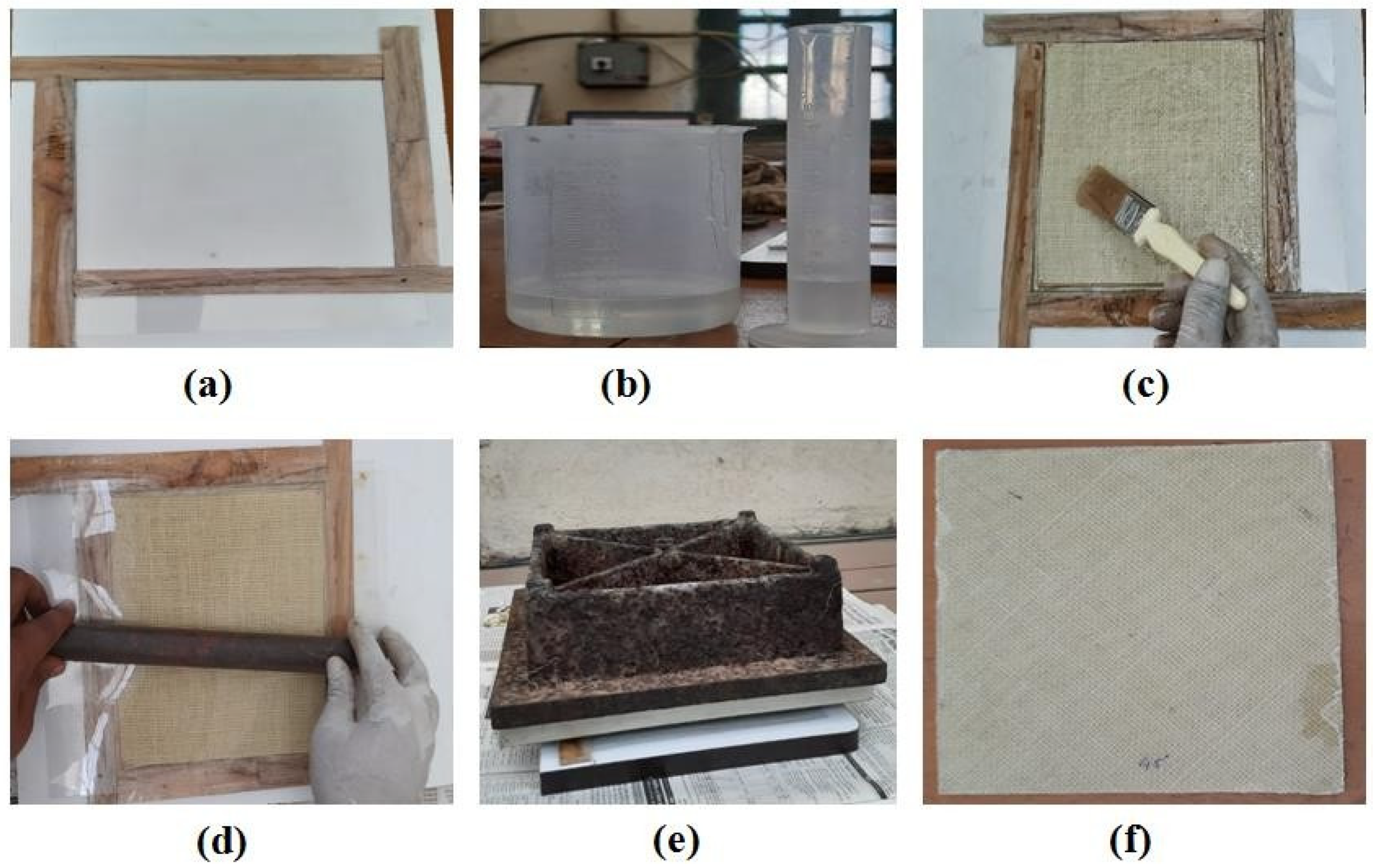


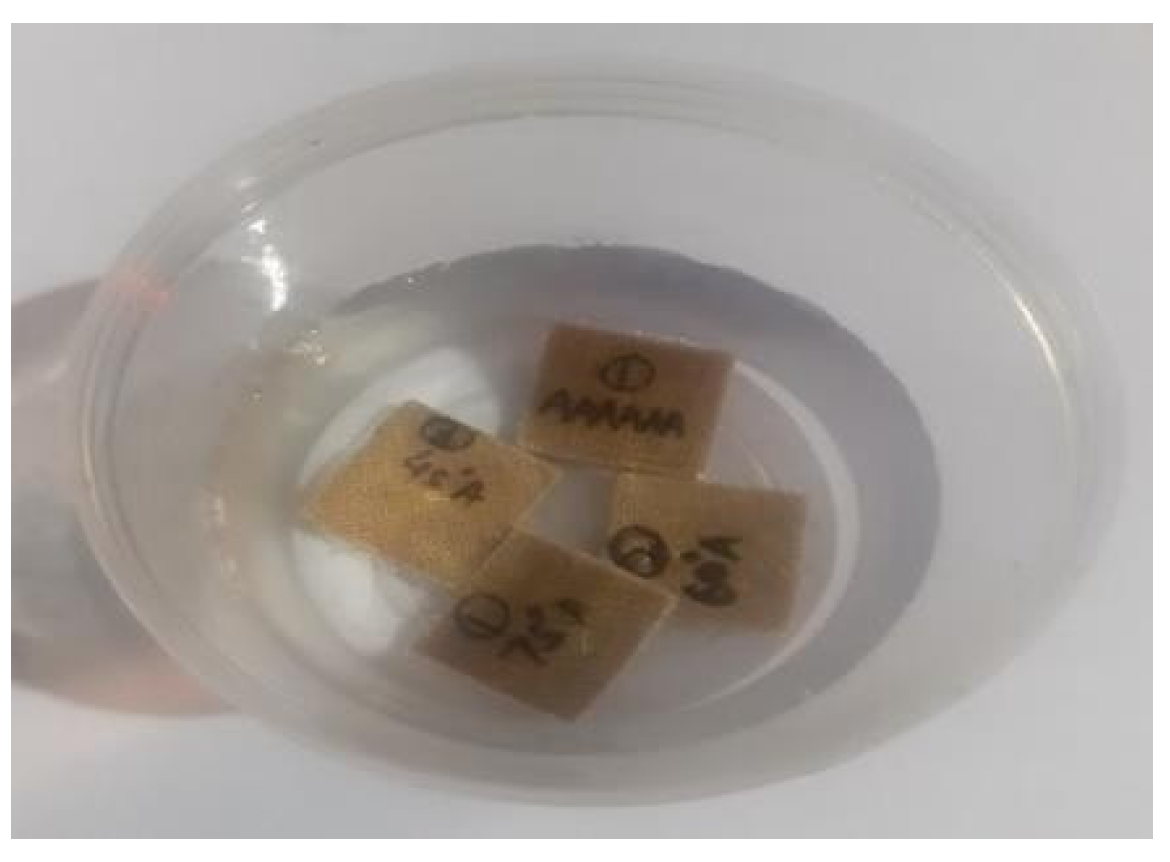
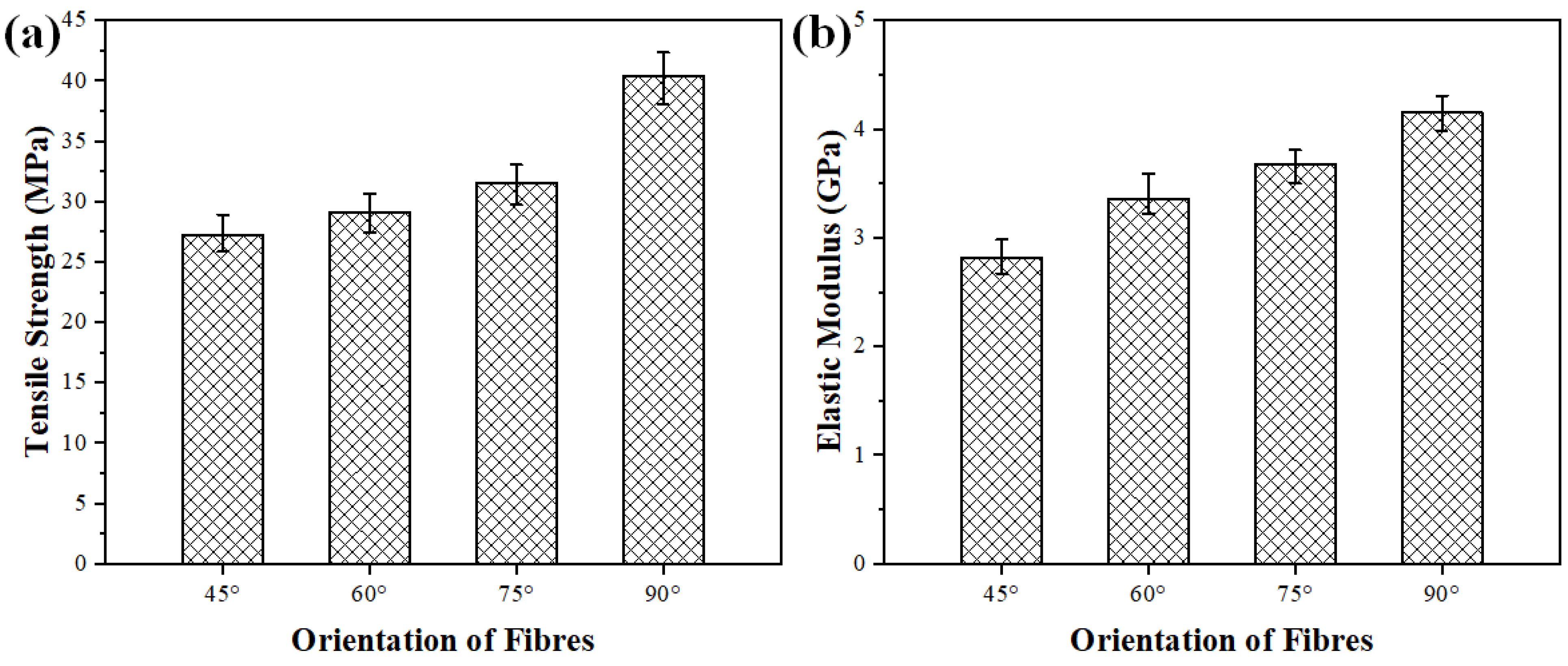

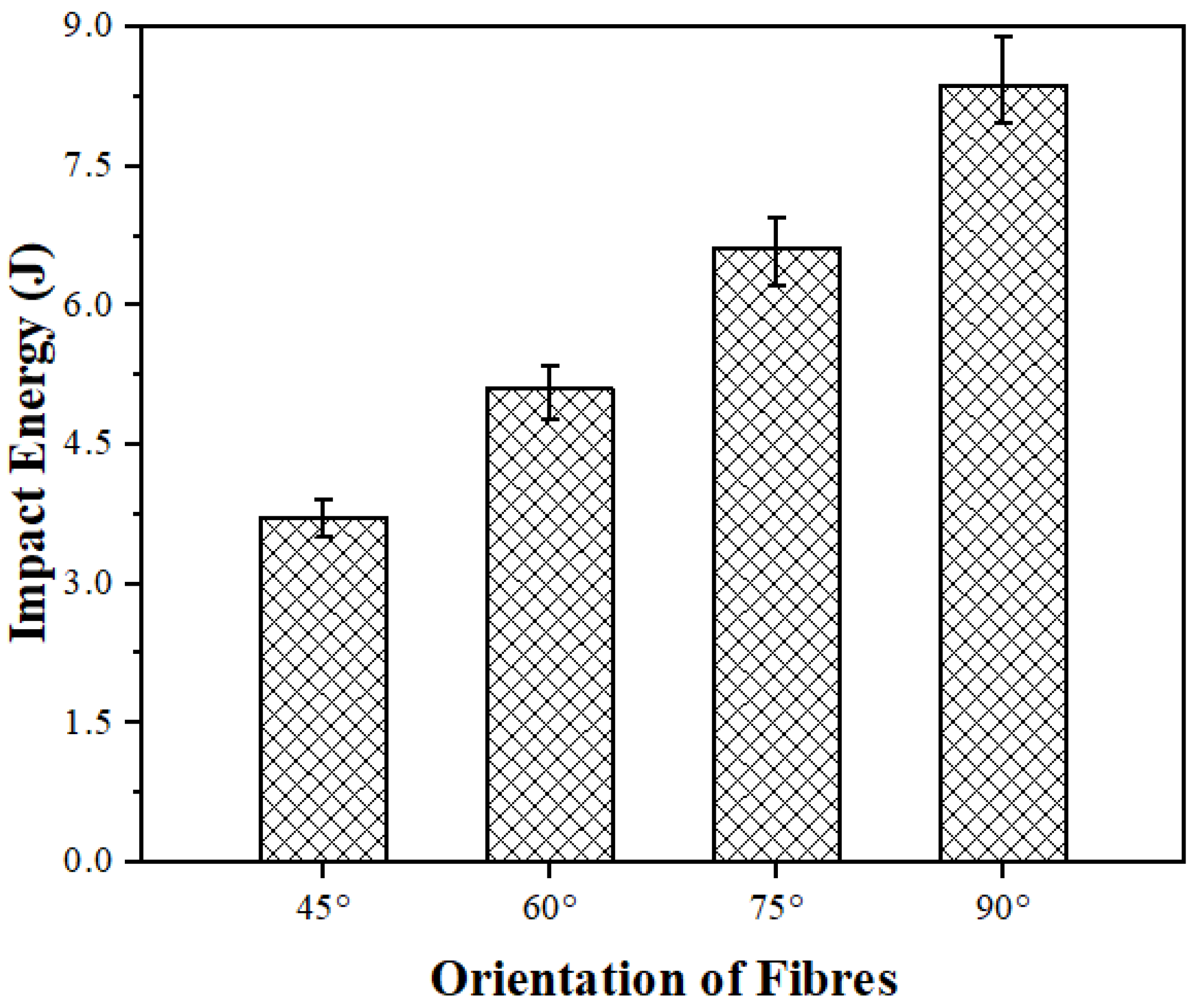

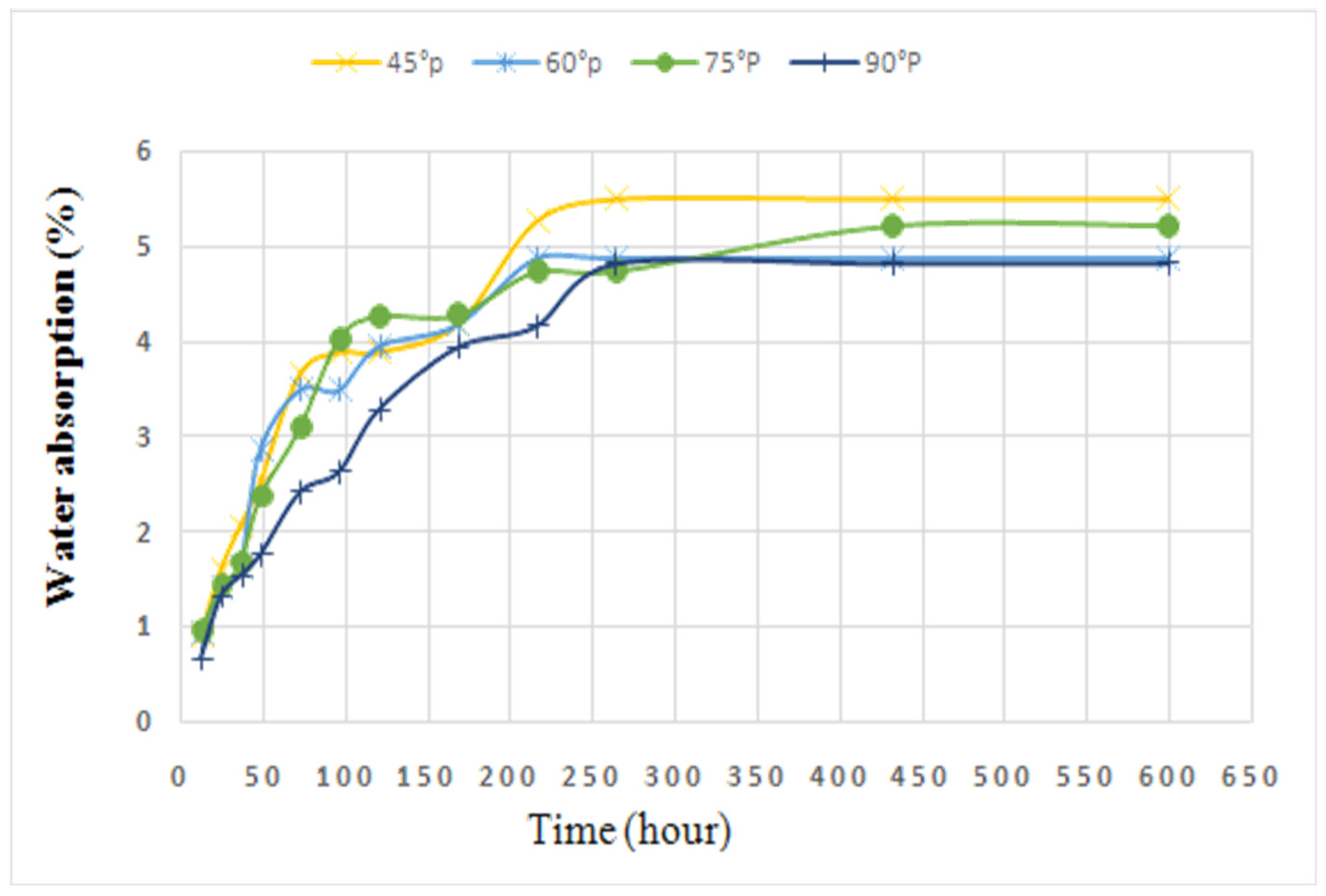
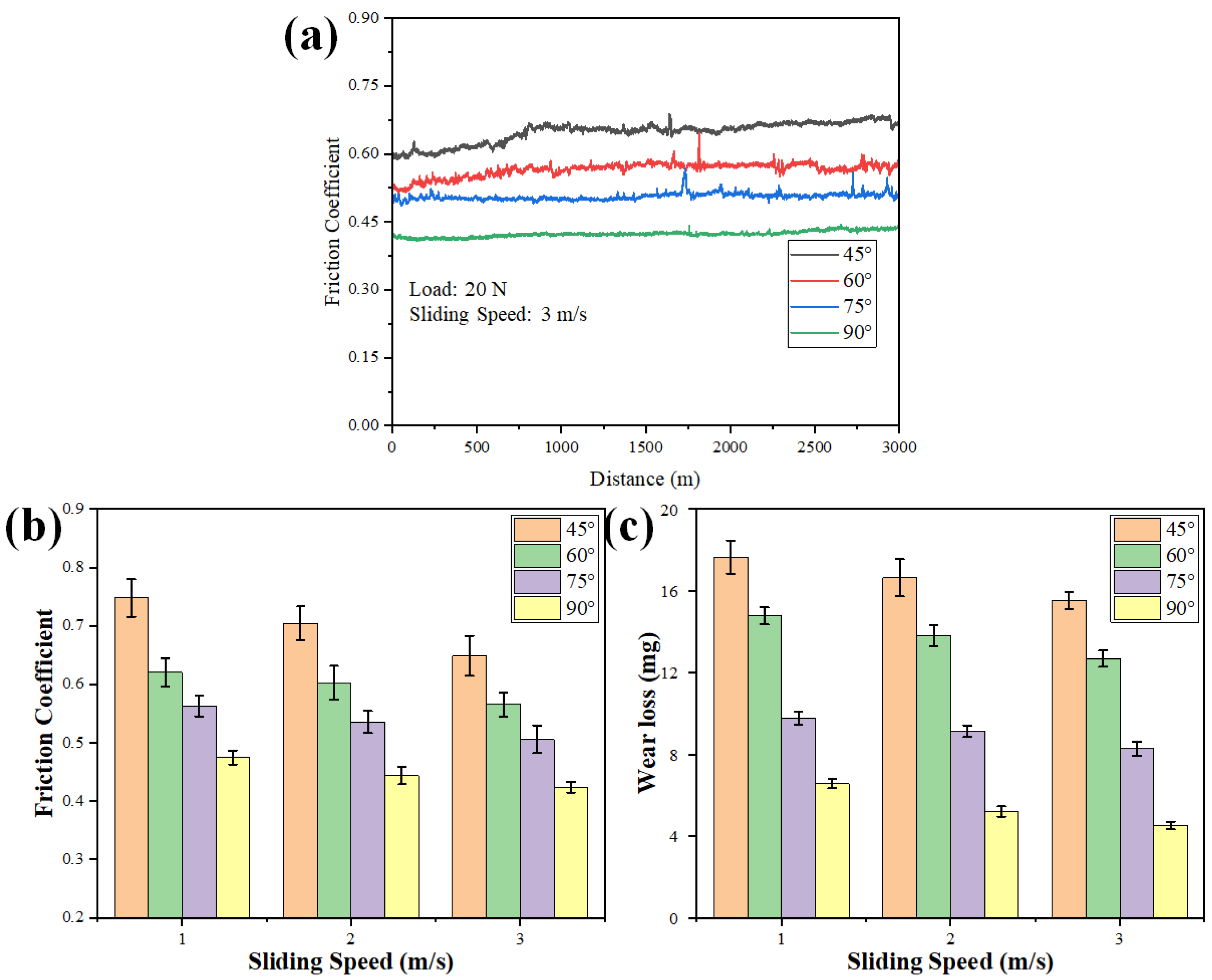
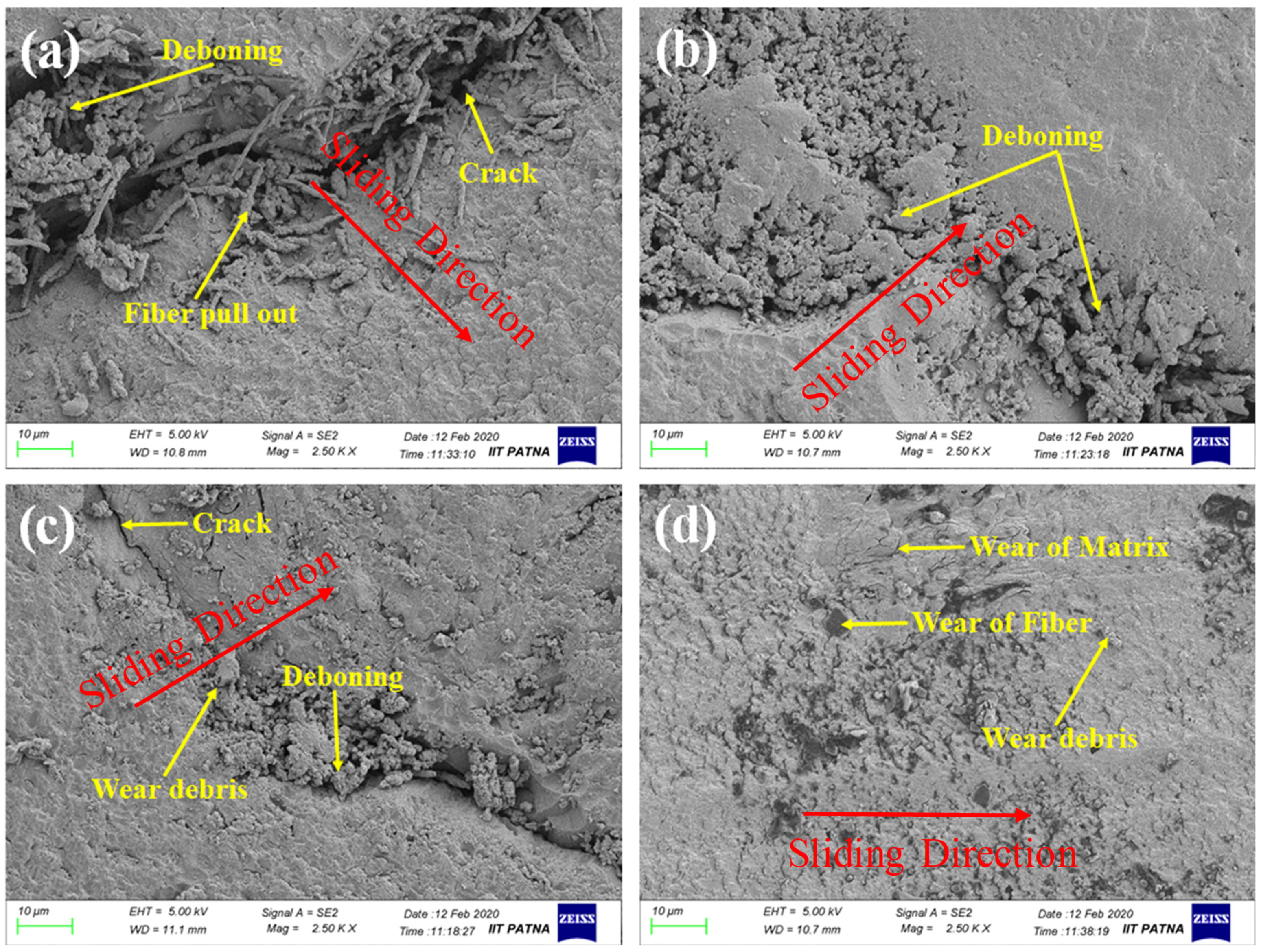
| Properties | Unit | Values |
|---|---|---|
| Cellulose | wt.% | 81.25 |
| Hemicellulose | wt.% | 12.83 |
| Lignin | wt.% | 3.94 |
| Ash | wt.% | 1.98 |
| Tensile strength | MPa | 414–500 |
| Young’s modulus | GPa | 34.6–82.2 |
| Elongation at break | % | 1.7–4 |
| Density | g/cm3 | 1.5 |
| Properties | LY 556 | HY 951 |
|---|---|---|
| Physical Nature | Liquid | Liquid |
| Appearance | Clear | Clear |
| Epoxy Content | 5.30–5.45 eq/kg | - |
| Density (25 °C) | 1.15–1.20 g/cm3 | 0.97–0.99 g/cm3 |
| Viscosity (25 °C) | 10,000–12,000 MPa·s | 10–20 MPa·s |
| Flash Point | >200 °C | >180 °C |
Disclaimer/Publisher’s Note: The statements, opinions and data contained in all publications are solely those of the individual author(s) and contributor(s) and not of MDPI and/or the editor(s). MDPI and/or the editor(s) disclaim responsibility for any injury to people or property resulting from any ideas, methods, instructions or products referred to in the content. |
© 2025 by the authors. Licensee MDPI, Basel, Switzerland. This article is an open access article distributed under the terms and conditions of the Creative Commons Attribution (CC BY) license (https://creativecommons.org/licenses/by/4.0/).
Share and Cite
Kumar, N.; Singh, S.; Singh, A.; Han, T. Mechanical, Water Absorption, and Tribological Behavior of Polymer Composites: Role of Pineapple Leaf Fiber Orientation. Lubricants 2025, 13, 161. https://doi.org/10.3390/lubricants13040161
Kumar N, Singh S, Singh A, Han T. Mechanical, Water Absorption, and Tribological Behavior of Polymer Composites: Role of Pineapple Leaf Fiber Orientation. Lubricants. 2025; 13(4):161. https://doi.org/10.3390/lubricants13040161
Chicago/Turabian StyleKumar, Nitish, Sudesh Singh, Abhishek Singh, and Tianyi Han. 2025. "Mechanical, Water Absorption, and Tribological Behavior of Polymer Composites: Role of Pineapple Leaf Fiber Orientation" Lubricants 13, no. 4: 161. https://doi.org/10.3390/lubricants13040161
APA StyleKumar, N., Singh, S., Singh, A., & Han, T. (2025). Mechanical, Water Absorption, and Tribological Behavior of Polymer Composites: Role of Pineapple Leaf Fiber Orientation. Lubricants, 13(4), 161. https://doi.org/10.3390/lubricants13040161







